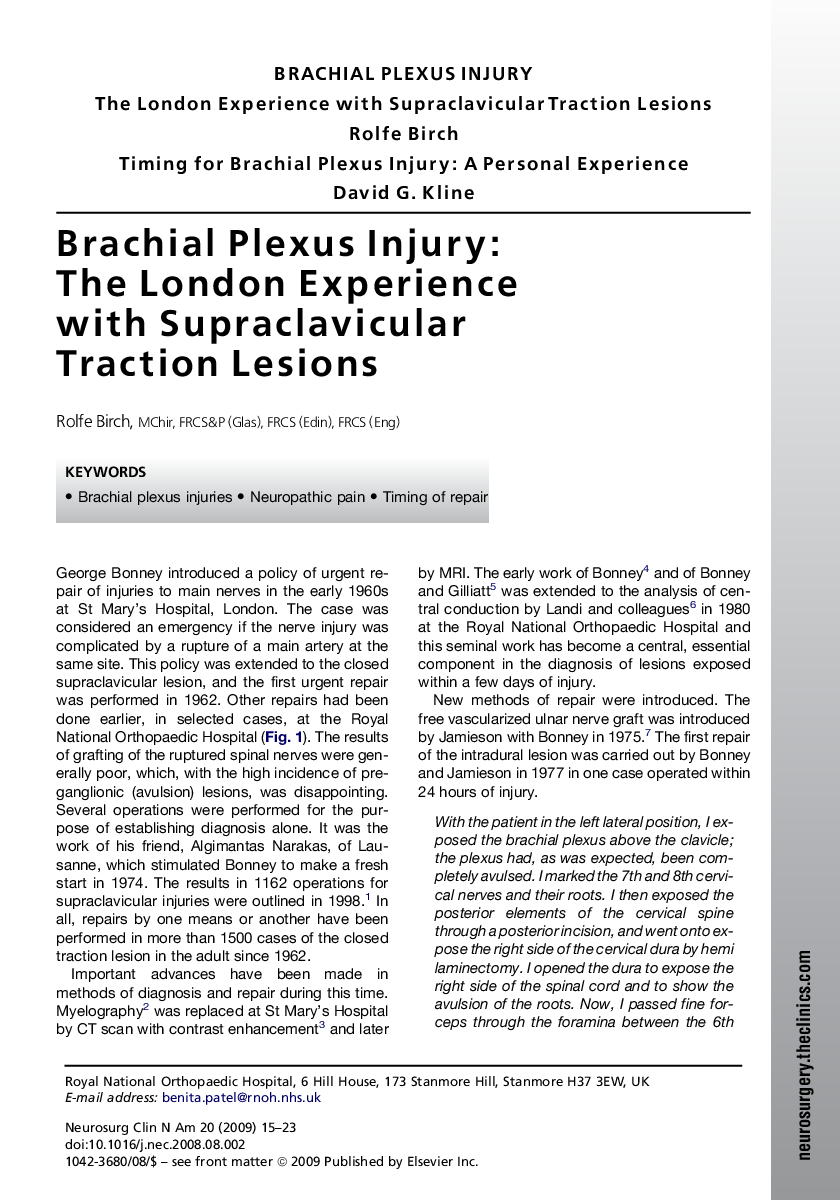| Article ID | Journal | Published Year | Pages | File Type |
|---|---|---|---|---|
| 3083996 | Neurosurgery Clinics of North America | 2009 | 9 Pages |
In this article, the author details the experiences of his hospital and other London hospitals in treating brachial plexus injury. As noted, important advances have been made in methods of diagnosis and repair. Myelography was replaced by CT scan and later by MRI. Among the topics the author explores are diagnosis (including pain, the presence or absence of the Tinel sign, and the irradiation of pins and needles) and the principles of repair. The author emphasizes that it is imperative that ruptured nerves be repaired as soon as possible, with the closed traction lesion coming, in urgency, close behind reattachment of the amputated hand or repair of a great artery and a trunk nerve in the combined lesion. Finally, the article concludes that the surgeon must be actively engaged in the whole process of rehabilitation and treatment of pain. This is part of a Point-Counterpoint discussion with Dr. David G. Kline's presentation of “A Personal Experience.”
